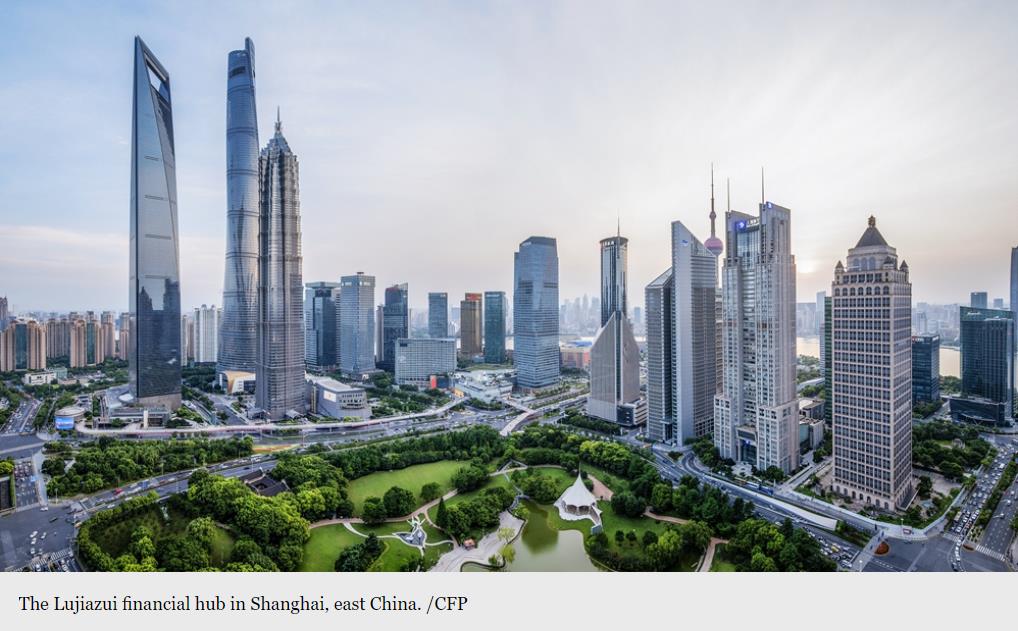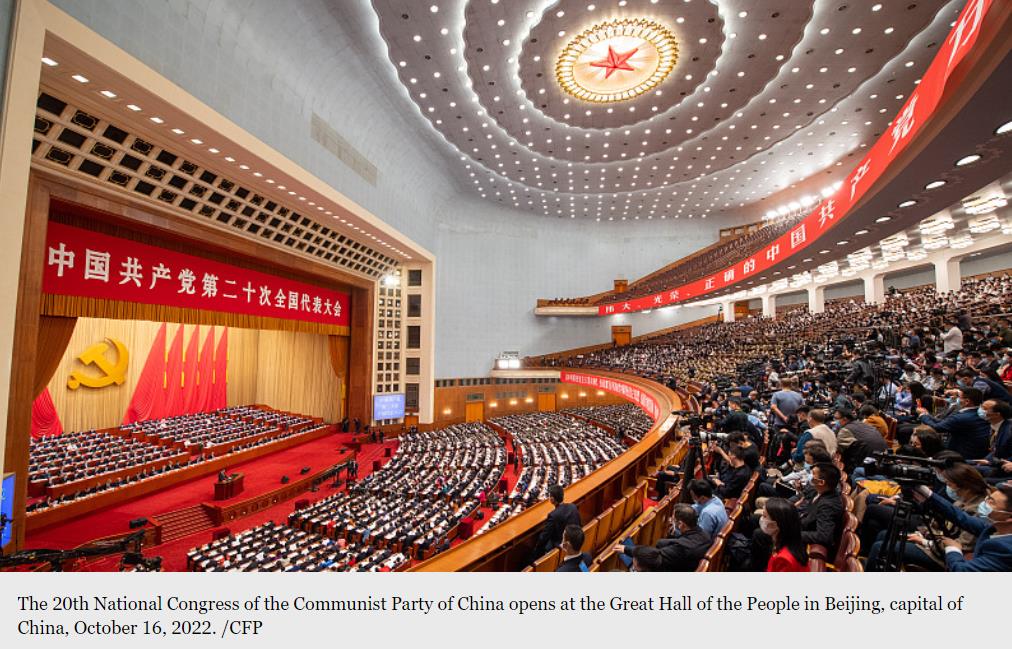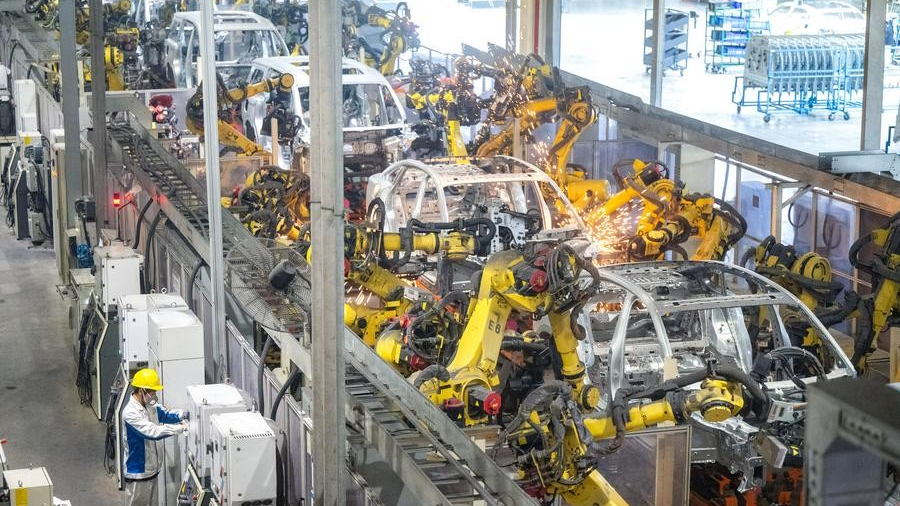【CGTN】夏璐等:Making sense of China's new pattern of development
发布时间:2023-02-03
Just in the first week back to business after the week-long Spring Festival holiday, Xi Jinping, general secretary of the Communist Party of China (CPC) Central Committee, has called for accelerating the establishment of China's new pattern of development and enhancing the security and initiative of development as he attended the second group study session of the Political Bureau of the newly-elected 20th CPC Central Committee on January 31.
The concept of new pattern of development has attracted a new round of attention since the 20th National Congress of the CPC in the autumn of 2022. The selection of the topic for the Politburo group study has also signified the strategic points of China's economic development for the years ahead, including but not limited to residential consumption, scientific innovation, and further integration, which could be discerned from Xi's remark as well.
Consumption: Stabilizer of national economy
According to mainstream economic theory, residential consumption has been viewed as one of the three wagons that has been fueling China's economic growth since the reform was launched over four decades ago. What is more, the consumption has also been considered as the stabilizer of the country's national economy.
As an important part of domestic demand, consumption has a stimulating effect on economic growth. Since 2013, the contribution rate of consumption to China's economic growth has exceeded the contribution rate of investment, taking more than 50 percent to China's GDP.
Specifically, in 2021, the contribution rate of final consumption expenditure to economic growth was as high as 65.4 percent, driving the country's GDP growth by 5.3 percentage points, making itself the main engine for economic growth in China and has an important position in the strategy of expanding domestic demand.
A recent report based on the official data from National Bureau of Statistics (NBS) has shown that the contribution rate of consumption to China's economic growth for the year of 2022 has reduced to 32.8 percent, which becomes a signal to the slow-down of national economy due to the impact of COVID-19 and related elements.
Admittedly, the current situation in terms of recovery of residential consumption is not very optimistic. Though we have witnessed that most Chinese people have made expenditure in the Spring Festival holiday compared with the last two, there are still certain amount of people who cannot join and enjoy the expansion of domestic demand. That's why, in Xi's remarks, he stressed that efforts should be made to provide ordinary people with ability and willingness to consume.
Innovation: Primary engine for China's future development
Over a decade ago, for the first time, the 18th National Congress of the CPC has clearly stated that scientific and technological innovation is a strategic support for improving social productivity and comprehensive national strength; therefore it must be placed at the core of the overall development of the country.
It's also emphasized that China must adhere to the road of independent innovation with Chinese characteristics and implement the innovation-driven development strategy. This was the first time the concept of innovation-driven development strategy was publicly proposed, a major decision made by the CPC with an eye to the world and facing the future.
According to some scholars' analysis, the "innovation-driven development strategy" has two basic meanings: Firstly, China's future development should be driven by scientific and technological innovation, rather than simply labor and resource energy. Secondly, the purpose of all innovation is to drive national socio-economic development, rather than simply publishing high-level papers or pure "ivory tower" activities.

Based on this idea, the central authority published several top-level national science and technology strategies in the new era to build a national innovation system with Chinese characteristics.
As a result, in spite of the continuous stranglehold imposed by certain countries, over the past decade, China has still made substantial progress in scientific and technological innovation. According to the NBS, in the past 10 years, the total amount of R&D investment in China, both public and private, has grown from 1.03 trillion Chinese yuan ($150 billion) in 2012 to 2.79 trillion yuan ($410 billion) in 2021. And in the Global Innovation Index published by the World Intellectual Property Organization, China's ranking has risen from 34th in 2012 to 11th in 2022, showing that China's status and role in the global innovation circumstance have undergone substantial improvement.
Innovation would not sustain if there is lack of education and talent cultivation; therefore it is believable that China will expand the investment in these areas in recent years ahead.
Integration: Trending
Some economists argue that in today's world, the most scarce resource is the market. And in order to establish the new pattern of development, China should devote to expanding the old markets or even form new ones.
Hence, integration may play important roles in near future. There are two aspects in terms of integration in Xi's remarks: on the one hand, it's the domestic integration at the national level, advancing rural-urban integration, breaking up regional barriers, and finally forming a unified national market; on the other hand, it's the international integration at the global level, promoting the high-quality development of the Belt and Road Initiative and actively participating in negotiations of global economic and trade rules to help establish an open, diverse and stable world economic order.
Since China launched the market-oriented reform and opening-up policy in 1978, different levels and scales of markets have been created and formed. They once did contribute to Chinese economic boom in the early stage of reform, however, as the reform went into deep water region, a nation-wide unified market that works systematically was in urgent need.
Some regions have more connection to the outside world than its neighbor province, while other regions have preserved smaller circulations that only cover certain locales without any wider connection. If one country's market is not unified as one, how could the country consider itself a unified one? Rejuvenation of Chinese nation shall be done on a primary basis of a unified nation having good interaction with an open and diverse world.
Binding all the three abovementioned aspects together comes the theme of the group study session, i.e. security. And only by focusing on these aspects and then building the new pattern can China enhance its capability to survive, compete, develop and sustain amid all sorts of predictable and unpredictable storms so as to ensure that the process of the great rejuvenation of the Chinese nation will not be delayed or interrupted.
原文链接:Making sense of China's new pattern of development







